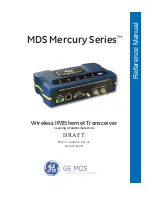
12-GHz Photoreceivers
Operation • 5
Operation
Introduction
High-speed measurements down to a few microwatts
are easy with the Model 1580-A amplified
photoreceiver. This module converts optical signals to
electronic signals, in effect, giving any high-speed/
high-frequency instrument in your lab an optical
input. The small size of the module allows you to
connect it directly to your test instrument, eliminating
the need to follow the photoreceiver with coaxial
cable, which can seriously distort picosecond pulses
and attenuate microwave signals.
In earlier “low-frequency” models, Models 1580-LF, we
used an external DC block to achieve low-frequency
cutoffs of 10 kHz. In the current “-A” versions, we
eliminated the external blocking capacitor, achieving
the 10-kHz cutoff with an internal capacitor.
The Model 1580-A uses a GaAs PIN photodiode
designed for high responsivity in the 780–870-nm
wavelength range. The internal 62.5-µm multimode
fiber which delivers light to the photodiode permits
the use of input fibers with cores of 62.5 µm or smaller,
including single-mode fibers. The high-speed amplifier
which follows the photodiode produces a clean impulse
response with minimal ringing, making the Model
1580-A ideal for digital communication
measurements.
The Model 1580-A has a negative conversion gain due
to the inverting amplifier used. If you are using an
1580-A Rcvr revA.fm Page 5 Friday, May 10, 2002 3:07 PM
Содержание 1580-A
Страница 4: ...4 Contents NEW FOCUS Inc ...
Страница 14: ...14 Customer Service NEW FOCUS Inc ...


































